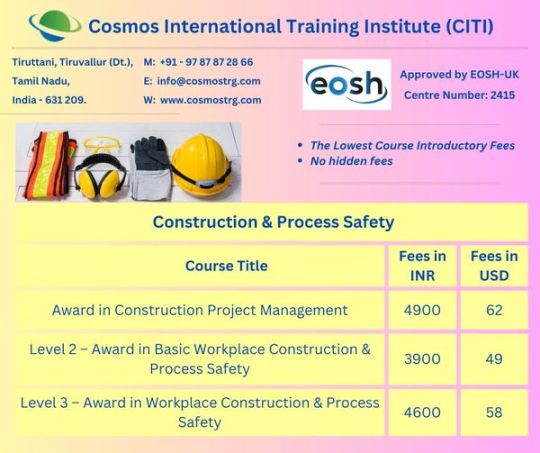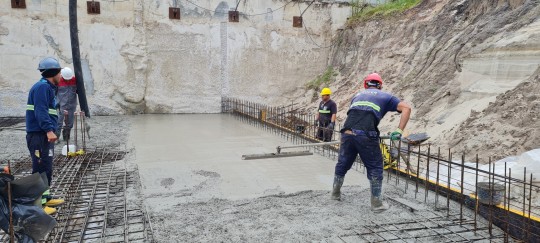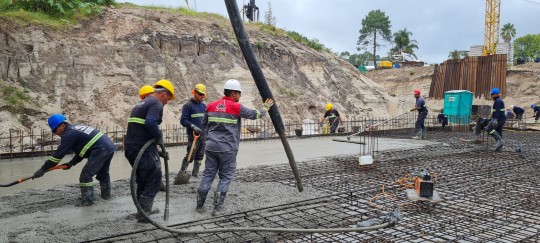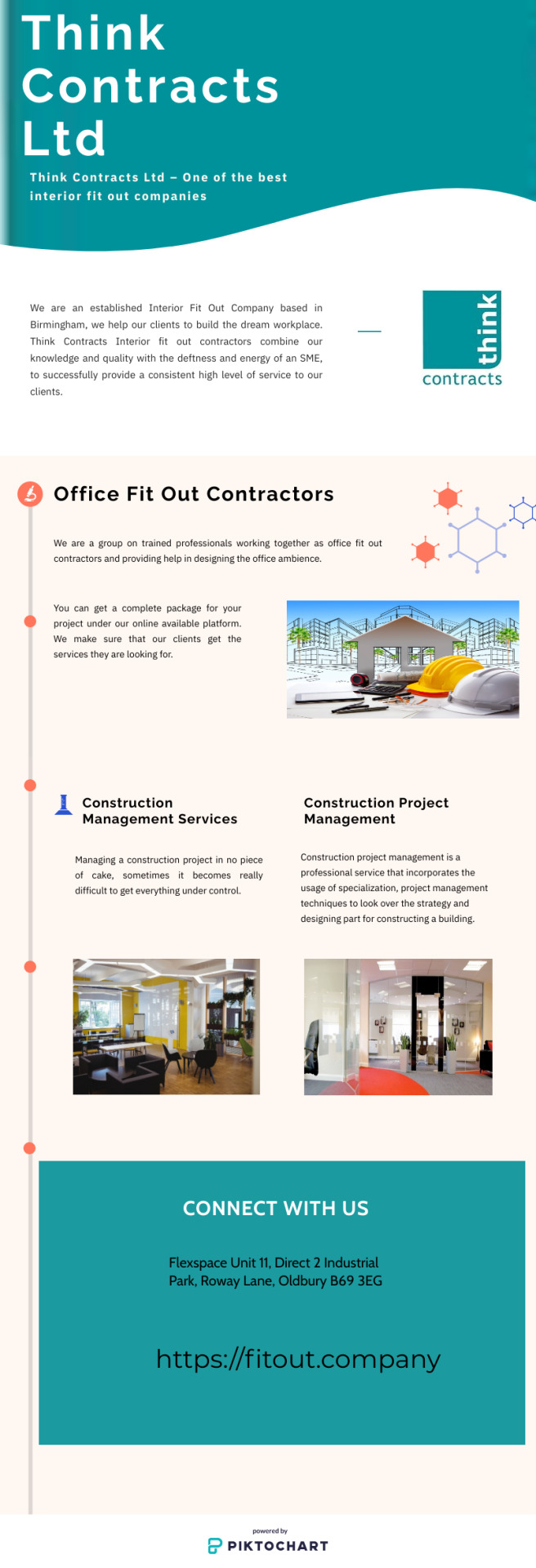#ConstructionProjectManagement
Explore tagged Tumblr posts
Text
Health and Safety: Understanding the Construction (Design and Management) Regulations 2015 (CDM 2015)
In the construction industry, ensuring the health and safety of workers is a critical responsibility. The risk of injury or fatality on construction sites is high, which is why robust regulations are in place to mitigate these risks. One of the most important pieces of legislation in the UK that governs construction health and safety is the Construction (Design and Management) Regulations 2015, commonly known as CDM 2015.
CDM 2015 serves as the cornerstone for safety management on construction projects, setting out key responsibilities for employers, designers, contractors, and workers. The regulations are designed to improve safety and health during all stages of a construction project, from the planning phase to the final handover.
In this article, we will break down the importance of CDM 2015, its main components, and how it shapes construction health and safety practices.

What Are the Construction (Design and Management) Regulations 2015?
CDM 2015 is a set of regulations that govern health and safety in construction projects in the UK. The regulations apply to virtually all construction work, whether it is a small residential renovation or a large commercial development. The key aim of CDM 2015 is to ensure that health and safety is considered at every stage of a construction project, from design to completion, and that risks are identified and managed before work even begins.
CDM 2015 replaced the earlier CDM 2007 regulations, refining the requirements for construction project safety. This revision was made in light of lessons learned from accidents and safety failures in the construction sector, with a focus on proactive risk management and collaboration between project stakeholders.
Key Components of CDM 2015
The main features of CDM 2015 focus on the roles of various parties involved in construction projects, outlining specific duties and responsibilities. Let’s look at some of the key components:
1. The Duty Holders Under CDM 2015
CDM 2015 divides the responsibilities of a construction project into specific roles, each with its own set of duties to ensure the safety of workers. These duty holders include:
Client: The client is the individual or organization commissioning the construction work. Under CDM 2015, the client has a crucial responsibility to ensure the project is properly planned, resourced, and executed. The client must also ensure that the necessary arrangements for health and safety are made, including appointing a Principal Designer and a Principal Contractor.
Principal Designer: This role is assigned to the designer responsible for managing the design stage of a construction project. The Principal Designer is tasked with ensuring that health and safety considerations are integrated into the design and that the project team is aware of any risks that could arise during construction.
Principal Contractor: The Principal Contractor is responsible for managing the construction phase of the project. This includes overseeing safety measures on-site, ensuring the construction workforce is competent, and implementing appropriate control measures to manage risks.
Contractors and Workers: Contractors and workers, though not directly responsible for managing the overall safety of the project, are still accountable for their own health and safety on-site. They must follow the safety procedures outlined by the Principal Contractor and ensure their activities do not endanger others.
2. Risk Management and Health and Safety Planning
CDM 2015 places a strong emphasis on risk management from the very beginning of a construction project. Before any physical work begins, comprehensive risk assessments must be conducted. The key document here is the Construction Phase Plan, which outlines how health and safety will be managed during the construction phase.
For example, when planning a new build or renovation, a risk assessment must be carried out to identify potential hazards, such as working at height or using heavy machinery. The risk assessment then informs the safety measures, including the use of Personal Protective Equipment (PPE) and fall protection systems.
Additionally, the project must have a Health and Safety File created at the design stage, which contains critical information on the project's health and safety risks and how they have been mitigated. This file remains an important resource throughout the project's lifespan, and even after the project is completed, to assist future maintenance or demolition efforts.
3. Worker Consultation and Involvement
Under CDM 2015, one of the most critical aspects is worker involvement. The regulations stipulate that workers must be consulted about their health and safety on the project and be involved in the decision-making process. This can be done through regular safety meetings, risk assessments, and encouraging open communication channels between workers and the safety management team.
This worker involvement is particularly important in ensuring that safety measures are practical, as those on the ground often have the most insight into the potential risks they face.
4. Competence and Training
Competence in the construction industry is paramount, and CDM 2015 stresses the importance of ensuring that all individuals involved in the project are competent to carry out their tasks safely. This includes ensuring that workers have the necessary qualifications, training, and experience to work with potentially dangerous machinery or in hazardous conditions.
The regulations also require that all parties involved—designers, contractors, and the client—be adequately trained in health and safety practices relevant to their specific role in the project.
5. Documentation and Record-Keeping
Documentation plays an essential role in ensuring that health and safety standards are met throughout the construction project. The Health and Safety File, for instance, is a comprehensive record of the safety measures, hazards, and risk management strategies that have been implemented on-site. This file should be updated regularly and handed over to the client at the end of the project for ongoing reference.
Health and Safety Hampshire: CDM 2015 in Practice
The implementation of CDM 2015 is not limited to large urban developments; it applies to all construction projects, regardless of location. In regions such as Health and Safety Hampshire, local authorities and contractors must adhere to the same regulations set out by the HSE. The approach in rural or less densely populated areas like Hampshire may differ in terms of the size and complexity of construction projects, but the principles of CDM 2015 still apply.
For instance, in Hampshire, construction projects might focus on more residential and infrastructure work, where attention to smaller-scale risks—such as those arising from building extensions or renovations—is essential. Local builders and contractors are encouraged to integrate health and safety best practices, ensuring they comply with CDM 2015 guidelines.
The Benefits of CDM 2015
CDM 2015 helps reduce accidents and injuries in construction by fostering a culture of safety and proactive risk management. By clarifying roles, requiring early planning, and enforcing robust risk assessments, the regulations ensure that safety is ingrained in the project from the outset. Furthermore, the involvement of all stakeholders, from the client to the workers, ensures that everyone is accountable and working toward a common goal—making construction sites safer for everyone.
Conclusion
The Construction (Design and Management) Regulations 2015 (CDM 2015) play a crucial role in shaping the health and safety landscape of the UK construction industry. By assigning specific duties to clients, designers, contractors, and workers, the regulations ensure that risks are managed effectively throughout the life of a project. Whether in Health and Safety in Hampshire or elsewhere, CDM 2015 is a vital tool in safeguarding workers and ensuring that construction projects are carried out safely and efficiently. As the construction industry continues to grow and evolve, the principles of CDM 2015 will remain essential to protecting the lives and well-being of those who work on building the future.
#health and safety#business#health#safety#safety training#real estate#services#construction#public health and safety#health and safety hampshire#CDM2015#constructionsafety#ConstructionRegulations#ConstructionHealthAndSafety#riskmanagement#workplacesafety#constructiondesign#DesignAndManagement#constructionplanning#hse training#constructionindustry#safetyregulations#constructionlaw#ConstructionProjectManagement#worker safety#buildingsafety#ConstructionRiskAssessment
1 note
·
View note
Text
Why Do Most Construction Projects Fail Without Expert Project Management?
Construction is one of the most dynamic and complex industries in the world. From commercial developments to infrastructure and residential buildings, every project requires precise coordination, strategic planning, and efficient resource management. However, despite the massive investment and planning involved, many construction projects still fail—delivered late, over budget, or below expectations. The missing ingredient? Project Management for Construction Projects, which ensures every aspect of the build is executed with accuracy, accountability, and alignment.
The Hidden Risks in Construction Projects
Construction is never as simple as breaking ground and building upward. It includes hundreds of moving parts—site preparation, material logistics, contractor scheduling, stakeholder communication, safety compliance, and more. Without someone overseeing the entire scope with a strategic lens, minor delays or missteps can escalate quickly.
Expert Project Management for Construction Projects brings structure and foresight to what is otherwise a chaotic process. It transforms high-risk variables into manageable components through planning, coordination, and monitoring.
Why Lack of Expert Management Leads to Failure?
1. Unclear Objectives and Scope Creep
When a project begins without clearly defined objectives and deliverables, teams tend to operate in silos. Without central leadership, goals shift, new requests emerge mid-project, and the original vision gets lost. This is known as scope creep, and it often leads to delayed timelines and rising costs.
Expert managers ensure everyone is aligned from day one, setting measurable goals and keeping the team focused. One of the key roles of Project Management for Construction Projects is to enforce scope control and ensure that any changes go through a structured approval process.
2. Poor Time and Resource Management
Delays in construction are often not caused by large disruptions, but by the accumulation of small inefficiencies—materials arriving late, labor gaps, or conflicting subcontractor schedules. Without a central figure tracking progress and preemptively adjusting resources, projects get derailed.
A skilled project manager acts as a conductor, synchronizing all players and ensuring each phase flows smoothly. They utilize scheduling tools, contingency buffers, and real-time reporting to reduce downtime and keep the project moving.
3. Budget Overruns and Financial Mismanagement
Many construction projects exceed their budget due to unanticipated issues, material price changes, or lack of cost tracking. Without a dedicated expert monitoring financial performance against the baseline budget, overspending becomes inevitable.
Project Management for Construction Projects includes a strong focus on cost control. Experts continuously review estimates, invoices, and procurement against forecasts. This proactive monitoring helps identify financial risks early, allowing quick corrective action.
4. Communication Breakdown
Construction projects involve various stakeholders—owners, architects, engineers, suppliers, and government regulators. When communication flows through too many channels without structure, misunderstandings occur, leading to errors and delays.
Professional project managers serve as the central communication hub. They document all decisions, coordinate stakeholder meetings, and ensure that each party receives timely and accurate information. Effective communication minimizes risk and maximizes accountability.
Without Expertise, the Margin for Error Widens
It’s not that construction teams don’t work hard or aren’t skilled. It’s that without expert project management, their efforts lack alignment. Projects become reactive rather than proactive. Issues are addressed after they escalate. Opportunities for cost or time savings go unnoticed.
Expert Project Management for Construction Projects isn't an added bonus—it's the foundation for success. With proper oversight, even the most complex builds can be delivered on time, on budget, and beyond expectations.
How do chrys and associates Deliver Construction Success?
At chrys and associates, we specialize in providing tailored project management solutions for the construction industry. Our proven systems, deep industry knowledge, and results-driven approach ensure that every detail is executed with precision and care.
Conclusion
Most construction failures are not caused by lack of effort—but by lack of expert management. With chrys and associates, your project gets the guidance, structure, and leadership it needs to succeed from the ground up.
0 notes
Text
Why Orangescrum Is a Game Changer for Construction Companies in 2025
Orangescrum revolutionizes construction project management in 2025 with real-time collaboration, resource planning, task tracking, and workflow automation, boosting efficiency, transparency, and on-time project delivery.
Read the full blog

#constructionprojectmanagement#constructionmanagement#projectmanagement#resourcemanagement#workforcemanagement
0 notes
Text
Importance and Challenges of Monitoring Construction Project Progress
Read more at https://www.cyberswift.com/blog/importance-and-challenges-of-monitoring-construction-project-progress/
The construction industry is known for its complex projects that involve multiple stakeholders, strict deadlines, and substantial financial investments. Ensuring the timely and efficient completion of these projects requires meticulous monitoring of work progress.

#ConstructionProjectMonitoring#ConstructionProjectMonitoringDashboard#ConstructionProjectMonitoringAndControl#ConstructionProjectMonitoringAndEvaluation#ConstructionSiteMonitoring#ConstructionSiteMonitoringSystem#ConstructionProjectManagement#ConstructionProjectManagementSoftware#ConstructionProjectManagementApp#ConstructionProjectManagementAi#ConstructionProjectManagementAssistant#ItBasedProjectMonitoringSystem#ProjectMonitoringSystem#ProgressMonitoringSystem#WorkProgressMonitoringSystem#ProjectProgressMonitoringSystem#WebBasedProjectMonitoringSystem#ProjectMonitoringSoftware
0 notes
Text

Expert Design Project Management Services | Sterling Surge
At Sterling Surge, we specialize in Design Project Management, ensuring smooth execution from concept to completion. Our expert team oversees every stage, optimizing resources, timelines, and budgets to deliver high-quality results. Whether it's architectural, industrial, or engineering design, we streamline workflows and enhance collaboration for efficient project delivery. With a focus on innovation and precision, we help businesses achieve their design objectives seamlessly. Trust Sterling Surge for comprehensive Design Project Management solutions that bring your vision to life with efficiency and excellence.
#tender&costmanagementuae#tendercostmanagementuae#costmanagementdubai#ProjectPlanning#ProjectManagement#ProjectManagementplan#ConstructionProjectManagement#DesignProjectManagement#ConstructionPlanning#Designmanagement#projectmanagementfirmsindubai
0 notes
Text
Revolutionizing Road Construction with Drone Survey and Mapping

The construction industry is experiencing a major transformation thanks to drone survey and mapping technology. In particular, the use of drone technology for road construction has opened new doors for efficiency, accuracy, and cost-effectiveness. Let’s dive into how aerial surveys and mapping services are reshaping road construction projects.
The Power of Drone Technology in Road Construction
In the past, road construction projects were heavily reliant on traditional surveying methods, which often took weeks and involved labor-intensive processes. Today, drone survey and mapping is changing all that. With drones equipped with high-resolution cameras and geospatial data sensors, construction teams can collect accurate data faster and more safely than ever before.
For example, aerial surveys conducted by drones can cover large areas in a fraction of the time it would take traditional methods. These drones capture high-definition images and videos that are processed into 3D models, providing a comprehensive overview of the terrain. This helps in planning the alignment of roads, assessing potential challenges, and minimizing errors during construction.
Why Drone Mapping is a Game Changer for Construction Project Management
One of the major benefits of drone survey and mapping is its impact on construction project management. Drones provide real-time updates, enabling engineers and project managers to monitor progress and make adjustments on the fly. This level of precision and accessibility helps keep projects on schedule and within budget.
For instance, drones can be used to check for any discrepancies in road construction, ensuring that the project is progressing according to plan. With detailed geospatial data and accurate site surveys, teams can address issues before they become expensive problems.
Cost Savings and Time Efficiency
The financial benefits of using drone survey and mapping for road construction are undeniable. Traditional surveys are not only time-consuming but also costly due to the need for heavy equipment and numerous personnel. Drones reduce these costs significantly by offering a faster, safer alternative.
Furthermore, aerial surveys with drones allow construction companies to gather precise data quickly, leading to fewer mistakes and costly delays. The result? More efficient projects that are completed on time and within budget.
The Future of Drone Survey and Mapping in Road Construction
The future of drone survey and mapping in the construction industry looks bright. As drone technology continues to evolve, drones will become even more autonomous, requiring less human intervention and providing even more accurate data. With advancements in Artificial Intelligence (AI) and LiDAR technology, drones will be able to capture data in ways we can’t even imagine yet, further optimizing construction project management and ensuring sustainable and cost-effective road construction.
Conclusion: The Road Ahead with Drone Mapping
The use of drone survey and mapping is no longer a novelty in road construction — it’s a necessity. By improving data accuracy, cutting costs, and speeding up project timelines, drones are setting a new standard for construction projects around the world. As the technology continues to advance, we can expect even more exciting developments that will shape the future of infrastructure and road construction.
Stay ahead of the curve and embrace the future of road construction with drone survey and mapping technology!
#DroneSurveyAndMapping#DroneTechnology#AerialSurvey#RoadConstruction#MappingServices#ConstructionProjectManagement#GeospatialData#SiteSurveys#DroneSurvey#ConstructionInnovation#LiDAR#AutonomousDrones#AIinConstruction#SustainableConstruction#ConstructionTech#DroneMapping#SurveyingTechnology#GeospatialSurvey#InfrastructureDevelopment
1 note
·
View note
Text
The Benefits of ERP in Construction Project Management

Discover how ERP streamlines construction project management by improving planning, budgeting, resource allocation, and real-time tracking for enhanced project success.
Read on https://www.cypruserp.com/the-benefits-of-erp-in-construction-project-management/
0 notes
Text

#eoshcourses#eoshcourse#eosh#eoshuk#construction#constructiontraining#constructionprojectmanagement#ConstructionSafety#healthsafety#HACCP#constructionprogress#foodsafetytraining#firefighter#firesafetytraining#firesafetyeducation#firstaidtraining#firstaid#constructionmanager#constructionsite#safetyfirst#safetymanagement#civilengineering#Civilcourses#CivilTraining#ipl2024#ipl#foodsafetycoursei_in_india
0 notes
Text
Mastering Construction Project Management: A Comprehensive Guide
Dive into the world of iPlanTables workstations and witness the evolution of Construction Project Management. Experience the seamless transition from paper-based methods to digital precision, which empowers teams with instant access to critical project information and fosters real-time collaboration. Say farewell to outdated processes and embrace a new era of efficiency and effectiveness in construction project management.
0 notes
Text

As an engineer, you possess strong technical expertise in construction and design. However, executing a successful project requires more than just technical knowledge—it demands effective planning, resource management, risk mitigation, and compliance with industry regulations. This is where construction project management becomes essential.
Batch starting 28th April, Enrol now: https://bit.ly/4l0TMgY or Call: +91 9082096009.
#RealEstateOnlineCourses #ConstructionProjectManagement #REMInstitute
0 notes
Text
Our construction project management skills set us apart. We handle complexities so you don’t have to. Join us and watch your project thrive! For #ConstructionProjectManagement, click: https://gritprojectpartners.com/

0 notes
Text

Premium Interior Fit Out Solutions in Dubai – Sterling Surge
Sterling Surge specializes in Interior Fit Out Dubai, delivering high-quality solutions that transform spaces with style and functionality. Our expert team manages every aspect of the fit-out process, from design to execution, ensuring seamless project delivery. Whether for commercial, residential, or hospitality spaces, we focus on premium materials, innovative designs, and precision craftsmanship. At Sterling Surge, we create interiors that reflect your vision while optimizing comfort and efficiency. Explore our Interior Fit Out Dubai services today and elevate your space with expert design solutions.
#tender&costmanagementuae#tendercostmanagementuae#costmanagementdubai#ProjectPlanning#ProjectManagement#ProjectManagementplan#ConstructionProjectManagement#DesignProjectManagement#ConstructionPlanning#Designmanagement#projectmanagementfirmsindubai
0 notes
Text


3 notes
·
View notes
Text
Cayman Island Residential Real Estate - Douglas Construction
Douglas construction provides fresh and beautiful ideas regarding residential real estate in Cayman Islands. We deal with residential buildings that are located at beautiful locations of the island.

#Residential Real Estate#real estate#furniture#remodeling#master bedroom#bathroom remodeling#building construction#constructionprojectmanagement#construction building
1 note
·
View note
Photo

Managing a construction project in no piece of cake, sometimes it becomes really difficult to get everything under control. We as a company, master in construction management services and provide our clients with a complete package for a new construction project.
#InteriorOfficeRefurbishment#CommercialFitOutCompany#OfficeFitOutContractors#ConstructionManagementServices#ConstructionProjectManagement
1 note
·
View note